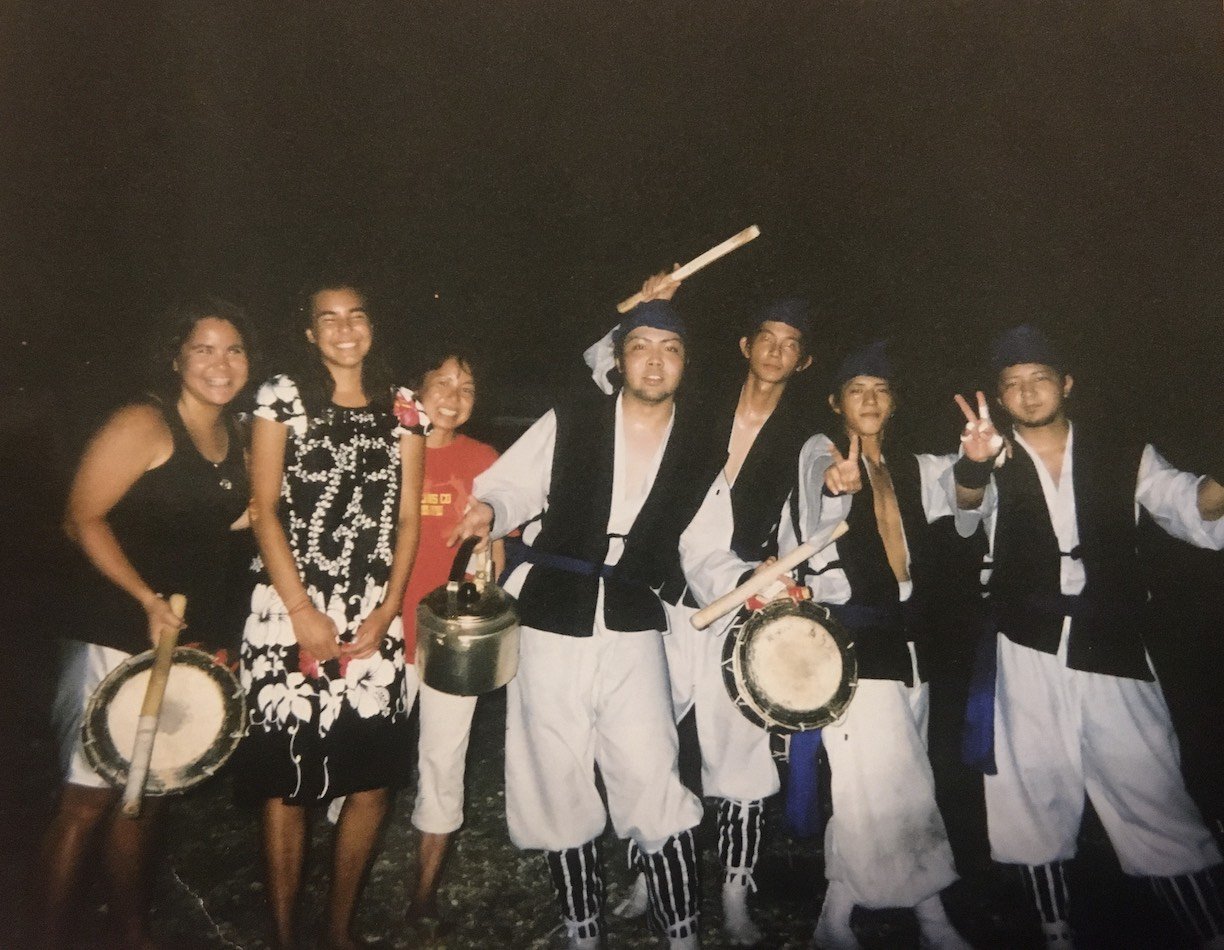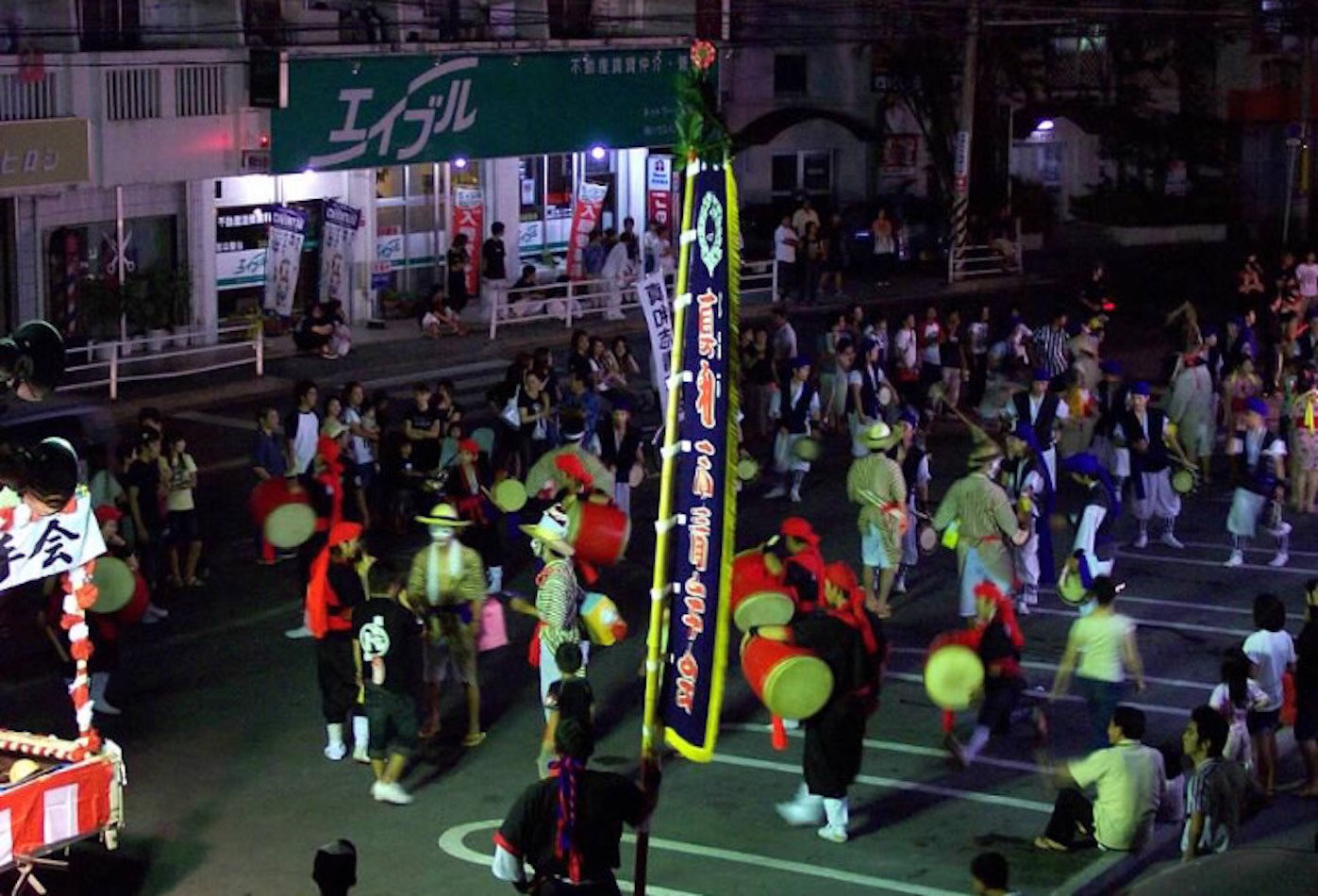THE KARATE KID PART II
The Cultural War Of Colonization
My favorite entry in the KARATE KID film franchise is PART II. At first glance, it is “Daniel-san goes to Japan and saves a town!” the movie. The second installment takes place about six months after Daniel (Ralph Macchio) won the All Valley Karate Tournament, Mr. Miyagi (Pat Morita) has to return to Okinawa for his father’s death. Daniel tags along and learns more about his mentor, Japanese culture, and what it means to fight for the glory of love.
The film is a run-of-the-mill Cannon-for-kids, entertaining, and a little bit cheesy sequel. Sato (Danny Kamekona), one of the villains, hits a stereotype a little too hard as the slick, aggressive, ruthless businessman with an air of Yakuza. Chozen (Yuji Okumoto) is a young thug with something to prove, but his character is given very little depth otherwise. Miyagi is the man that comes home to reconnect with his roots, rekindles a romance with his first love, and in the process he and Daniel save the town from destruction through martial arts and honor. Replace Okinawa with some coal town in Virginia and martial arts with ethical lawyering and this could be a Hallmark movie.
Surprisingly, if we take a look at THE KARATE KID PART II through a historical lens, we see a story rich in the cultural complexities of the effects of colonization. This movie takes place just a little more than a decade after the island chain of Okinawa was reverted back to Japan, no longer governed as an American colony. The characters' multinational backstories feel true to life. Their struggles, while feeling cliché for a movie, are a realistic representation of the shifting power struggle for the island. Choices in the set design subtly but poignantly remind us that this takes place in a colonized area.
This feeling of being quietly occupied is presented so authentically that it makes me wonder who did the research for Okinawa when writing this, and did they have experience living there? I ask because, for being a movie made by westerners, they did a pretty good job of capturing the conflicted spirit of what it means to be Okinawan. How do I know? Because I too am a product of colonized Okinawa, and a lot of elements of this film reminded me of my own struggle to understand my colonized identity.
Let's start with the three main Okinawan characters. Sato is the embodiment of a post-war Okinawan man who chose to lean into the assimilation to gain financial wealth and prestige. His character is presented as cold, focused on the future, and there are times that he comes off resentful of his more traditional Okinawan peers. This point is reinforced by how he leverages their agriculture against them. Okinawan agriculture is symbolic of colonialism, because in occupations by the Japanese and Americans, the most fertile land was stolen from locals and developed into retail or golf courses.
Sato has embraced being officially Japanese and is willing to erase Okinawan culture to succeed.
His wealth coming from development is supposed to be an added insult. He is villainized in the film for turning his back on his community, but in reality, many Okinawans do see themselves as equally Japanese.
Assimilation practices forced on the Okinawans by the Japanese government since the Meiji period have blurred the lines on the distinction between the two nationalities. Of all three characters, Sato is the one most likely to be able to bridge the transition from “old Okinawa” to the new.
Miyagi left Okinawa at the age of 18 and emigrated to Hawaii. He was later interned with his wife and conscripted into the U.S. Armed Forces. His back story is not uncommon. There are diaspora pockets of Okinawans all over the world., most notably in Hawaii and Brazil. Emigration from Okinawa was common pre-World War II, because Japanese assimilation policies made life difficult in the Okinawan islands. I can only imagine the complex feelings he must have had when returning to Okinawa after he fought for the U.S. forces that devastated and colonized it.
Miyagi’s former flame, Yukie (Nobu McCarthy), is our control character for the idealized Okinawan.
She lives in a traditional home, wears traditional clothing, and honors her heritage by passing on knowledge of Okinawan culture.
All three of these characters are uniquely Okinawan in that they share a history of being colonized and this highly influences the choices they made in how to identify themselves.
Other remarkable aspects of THE KARATE KID PART II, rarely spoken about is the way the film chose to depict occupied life in Okinawa. Most notable of these is the presence of the U.S. military. In various scenes throughout the movie and even one where the helicopter is discussed, we will see or hear helicopters in the background. The constant weight of being occupied by an opposing military is not a feeling most Americans will ever experience. You can see, hear, and feel it everywhere. The Okinawan province bears the brunt of the U.S. Bases in Japan, and the province pays rent for the U.S. Bases as stipulated in the Reversion agreement of 1972. This isn't the only example of how occupation has affected the Okinawans.
It is not lost on me when watching this that for Miyagi and Daniel to reach their traditional neighborhood from the airport, they must pass through a U.S. military base to do so. The transition from modern Naha City—which has been largely shaped by Japan and the U.S.—and then the insult of having to go through the U.S. military to access the most “traditionally authentic” part of Okinawa pisses me off every time I see that scene. Additionally, we see that Naha City, while modernized, is overrun with American GI's using it as a playground for their off duty time. There are many neighborhoods in Okinawa that cater specifically to American GI's and this is often where you will find the most strip clubs, dive bars, and highly fetishized sex shops.
While many older Okinawans avoid these neighborhoods, young people drawn by their fascination to the west will go to play there as well. This too is another effect of colonization. Eventually, this Eastern-Western fusion of cultures is all the younger generations know and with it some of the traditional Okinawan identity gets lost. Daniel’s love interest (and Yukie’s niece) in PART II, Kumiko (Tamlyn Tomita), is an example of someone who would be in this generation. Luckily, in her character we also see the effort to preserve and pass on the Okinawan heritage.
Art and dance is by far the most accessible and popular way that the Okinawan heritage is being preserved and shared today. The film centers around the Obon festival as the culmination point where peace is finally found. Eisa is the Okinawan music of the Obon festival. Kids and adults alike will practice Eisa music and dance year round so that when Obon finally arrives, they dance, play, and sing as roving troupes through the neighborhoods at night playing well into the AM. It is a time of overwhelming joy and pride to be Okinawan. The sound of Eisa drums beating like thunder in the air, is a primal reminder for Okinawans where they come from. Kumiko teaching Daniel how to Eisa dance will always warm my heart. That scene not only moves a romance plot, but it also illustrates how younger Okinawans connect to their heritage and share it in an ever increasing globalized world. With that in mind, it is fitting that PART II is the medium that introduced many people, especially younger ones, to Okinawa in global media.
THE KARATE KID PART II is a fun, satisfying sequel to its first movie. But, more than that, it is a remarkable example of how we can present and teach the effects of modern colonialism to a mainstream audience without it feeling like a history lesson. For those of us who lived it, this film is also a love song to the constantly evolving identity of what it is to be Okinawan.








